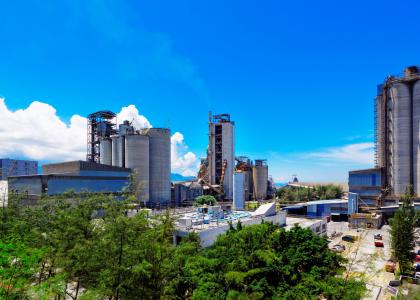Updated April 28, 2021
Nationally, low-income households spend three times more of their income on energy bills as compared to non-low-income households (i.e., have disproportionally high energy burdens). Low-income households have historically had less access to energy efficiency services as compared to other households. Systemic policies—such as redlining, discriminatory lending practices, and disinvestment—have led to low-income and communities of color living in segregated neighborhoods. These neighborhoods often have older buildings with less efficient appliances, heating and cooling equipment, and other structural issues that often lead to wasted energy.
To help address these inequities, many states have passed legislation, enacted regulations, and/or issued commission orders intended to encourage utilities to increase low-income energy efficiency program participation in low-income and historically marginalized communities.
Regulators play a key role in encouraging utilities to invest in equitable programs that reach low-income customers while understanding how these programs fit into broader utility portfolios. The following information on best practices outlines the importance of regulations to support low-income energy efficiency programs as well as steps that regulators can take to encourage the development and delivery of these programs.
Why Low-Income Energy Efficiency Programs Matter
As of 2019, about 21% of US households have incomes at or below 150% of the federal poverty line. ACEEE research has found that low-income, Black, Hispanic, Native American, households with older adults and renting households pay up to three times more of their household income on home energy costs as compared to the average household. A quarter of low-income households nationally spend more than 15% of their income on their energy bills. High energy burdens make it much more difficult for families to afford other basic necessities, such as food, medicine, child care, and housing. Although maintaining reasonable rates is a priority for all regulators, affordable energy costs cannot be addressed by low rates alone.
Utility customers who are low-income, older adults, and communities of color face numerous disadvantages when it comes to energy affordability. Due to a history of housing and other policies that have segregated communities, they typically have older and less-efficient appliances and heating and cooling equipment and live in homes that are structurally less efficient. Energy efficiency can help address many of the underlying factors contributing to a high energy burden by helping homeowners, multifamily building owners, and tenants replace appliances, seal leaky doors and windows, and install insulation. However, customers with lower incomes face numerous barriers to participation in efficiency programs. This makes well-designed, specifically targeted efficiency programs for low-income customers an important consideration for utility portfolios in order to achieve more equitable outcomes and affordable energy bills for all customers.
How Regulators Can Encourage Low-Income Energy Efficiency Program Development
Regulators play an important role in developing wide-reaching and effective energy efficiency programs for all customers, and especially for low-income customers. Typically, regulatory bodies have undertaken the following three approaches to encourage utilities to focus on low-income energy efficiency programs.
1. Set a goal for energy efficiency delivered to low-income customers.
States have taken a variety of approaches to goal setting for low-income programs, including requirements that low-income programs be included in utility portfolios, setting spending requirements, creating portfolio savings carve-outs specific to low-income programs, and including low-income savings performance as a performance incentive mechanism. Spending requirements are the most common, although these vary widely in terms of structure and the overall percentage of funds directed toward low-income programs. Below, we list several examples of spending, savings, and other requirements. For requirements across all states, see our State Policy Database.
Illinois. The Future Energy Jobs Bill (SB 2814) directs utilities to implement low-income energy efficiency measures costing no less than $25 million per year for electric utilities that serve more than 3 million retail customers in the state, and no less than $8.35 million per year for electric utilities that serve less than 3 million but more than 500,000 retail customers in the state.
Michigan. Legislation (PA 295 of 2008 and PA 342 of 2016) requires utilities to provide energy efficiency programs for low-income customers. Moreover, unlike all other programs that are funded only by the customer class that participates in those programs, all customer classes help fund the low-income energy efficiency programs (in proportion to each rate class’s contribution to the total portfolio).
Pennsylvania. Pennsylvania is the only state that requires utilities to achieve long-term energy savings goals for low-income programs. In June 2015, the Pennsylvania Public Utility Commission (PUC) issued an implementation order for Phase III of the Energy Efficiency and Conservation (EE&C) program, which runs through 2021, which requiresto be met through programs delivered in the low-income sector.
California. The Long Term Energy Efficiency Strategic Plan established a goal that by 2020, 100% of eligible and willing low-income customers will have received all cost- effective energy efficiency measures.
District of Columbia. The Energy Assistance Trust Fund (EATF) funds low-income programs in the amount of $3.3 million annually. For the 2017-2021 program cycle, the low-income spending requirement was raised to 20% of total portfolio expenditures ($3.9 million).
Connecticut. The state established a goal to weatherize 80% of the states’ residential units by 2030. The Home Energy Solutions (HES) and the HES-Income Eligible program will serve as the primary drivers supporting utilities in helping the state meet this goal.
2. Develop cost-effectiveness rules that reflect the additional benefits associated with low-income programs.
Efficiency providers have found that in order to deliver effective energy efficiency programs to low-income customers, it is often necessary to simultaneously address issues associated with health, safety, and home durability. Because of this, many low-income programs include measures (and their associated costs) that are less likely to be included in traditional energy efficiency programs—such as roof repairs, mold remediation, and asbestos removal. As a result, it is particularly important that the value of low-income energy efficiency measures are characterized in terms of both the energy and the non-energy benefits they provide to low-income customers.
States account for the additional costs and benefits of low-income programs in a variety of ways. Some states have quantified non-energy benefits associated with low-income programs and included these benefits in cost-effectiveness tests. Others have developed generic “adders” for low-income programs that effectively account for health and safety benefits. Many states have developed guidance that notes that low-income programs do not have to meet cost-effectiveness tests, or that utilities must meet cost-effectiveness requirements only at the portfolio level, allowing them to balance more cost-effective programs with higher-cost low-income programs.
Below, we offer some examples of how states have accommodated the inclusion of low-income programs in energy efficiency portfolios through adjustments to cost-effectiveness rules. For low-income program cost-effectiveness requirements across all states, see our State Policy Database.
Massachusetts. The Energy Efficiency Plan calculates non-energy benefits in its benefit-cost ratio. The cost effectiveness evaluation includes consideration of non-energy benefits such as asthma reductions, thermal stress reductions, reduced risk of carbon monoxide poisoning, reduced risk of fire, productivity improvements due to fewer missed workdays and improved sleep, and reduced reliance on high interest, predatory loans.
California. The Energy Savings Assistance Program Cost Effectiveness test (ESACET) and the Resource Total Resource Cost test incorporate non-energy benefits to low-income programs. This is in accordance to the social goal of providing equitable demand-side management treatment to the portion of the housing stock in which low-income customers reside.
Colorado. In applying the Total Resource Cost Test to low-income programs, benefits included in the calculation were increased by 20% (and further increased to 50% in 2018 for low-income programs)“to reflect the higher level of non-energy benefits likely to accrue from DSM services to low-income customers.” These costs are also not applied toward the calculation of utility performance incentives, which are based on net benefits.
Kentucky. Low-income programs are exempt from program-level screening. Furthermore, the Public Service Commission has stated that should a low-income program fail any of the traditional cost-benefit tests, utilities and their associated collaboratives may supply additional documentation to justify the need for the program.
Nevada. A 25% non-energy benefits adder is applied to low-income customer programs. Depending on the percentage of low-income participation in a program, the non-energy benefits adder is adjusted.
3. Convene a stakeholder group to address procedural equity concerns and ensure that clean energy programs are well designed to meet the needs of low-income customers.
Regulators can facilitate stakeholder engagement processes that consist of inclusive, accessible, authentic engagement and representation in developing or improving program design. Ideally these processes also include accountability measures so that the results of the process are incorporated into program design in the end. Formal engagement processes can take the form of committees, boards, or advisory councils that provide direct engagement and input on low-income customer issues. Engagement processes can address inequities in the process of program design by working to guarantee that communities' needs inform and drive the development of goals, programs, and policies.
Several states have working groups to inform program design generally and for low-income programs specifically. Over a dozen states have permanent statewide collaboratives, and many others have utility-specific collaboratives, efficiency advisory boards, or temporary stakeholder working groups that convene as needed. While many of these working groups have a broad focus, some states have developed subgroups or specific low-income working groups to address the specific barriers to low-income program implementation and participation. Below, we list examples.
Michigan. The Michigan Public Service Commission, Energy Waste Reduction (EWR) section, established the EWR Low Income Working Group to coordinate and optimize energy efficiency offerings and increase energy affordability for low-income residents. The working group consists of over seventy organizations, including state agencies, utilities, community organizations, and non-governmental organizations. The working group is collaboratively working to identify energy issues and barriers impacting low-income households, developing tangible deliverables required to address identified issues, and coordinate energy efficiency programs to better serve low-income residences and multifamily buildings.
Massachusetts. The Low-Income Energy Affordability Network (LEAN) is a network of community action agencies, public and private housing owners, government organizations, and public utilities across the state. The collaborative’s goal is to coordinate utility programs, programs implemented by other agencies and nonprofits, and a variety of funding sources to deliver streamlined and comprehensive solutions to low-income customers. The state’s Energy Efficiency Advisory Council (EEAC) created an Equity Working Group to develop just and equitable solutions for communities that have been underserved by existing Mass Save programs. In additions, the group will identify and recommend priority actions, plans, and partnerships to increase participation among several customers, including those with moderate incomes.
Tennessee Valley Authority. TVA facilitates an Energy Efficiency Information Exchange group made up of representatives from the seven state service districts. The group has examined various critical issues in the past and is currently focused exclusively on low-income weatherization. Stakeholders include utilities, low-income financing authorities, community activists, state agencies, and others. The group meets quarterly with the goal of creating a uniform low-income program to serve the TVA territory.
Delaware. The statewide Delaware Energy Efficiency Advisory Committee has a subcommittee focused on low-income issues. Subcommittee members include representatives from each utility, the statewide Sustainable Energy Utility, the state energy office, a low-income advocate, and community members from each county across the state. The subcommittee’s mission is to support all Delaware low-income energy efficiency programs and initiatives by providing feedback and guidance on the development and implementation of program offerings.



